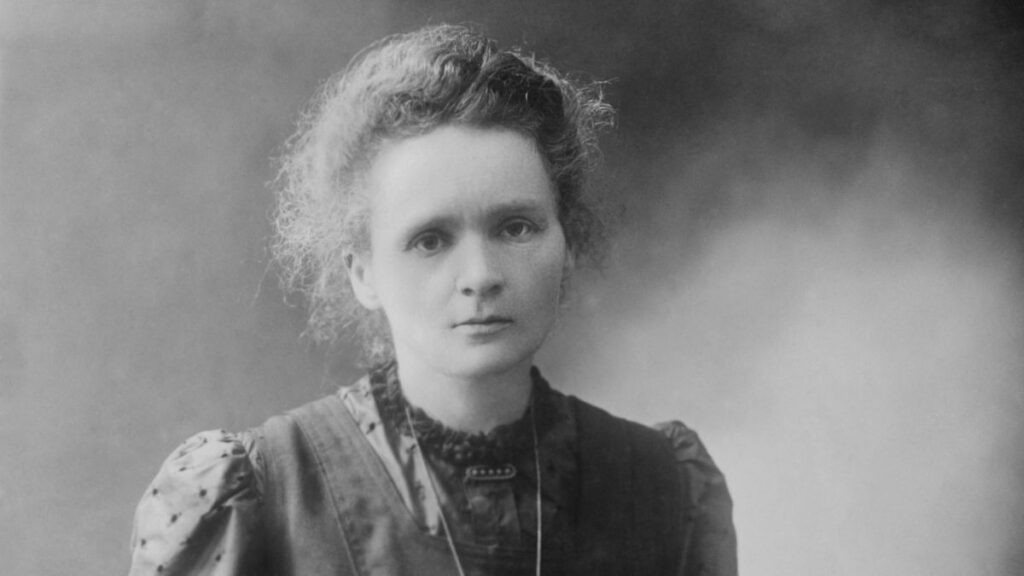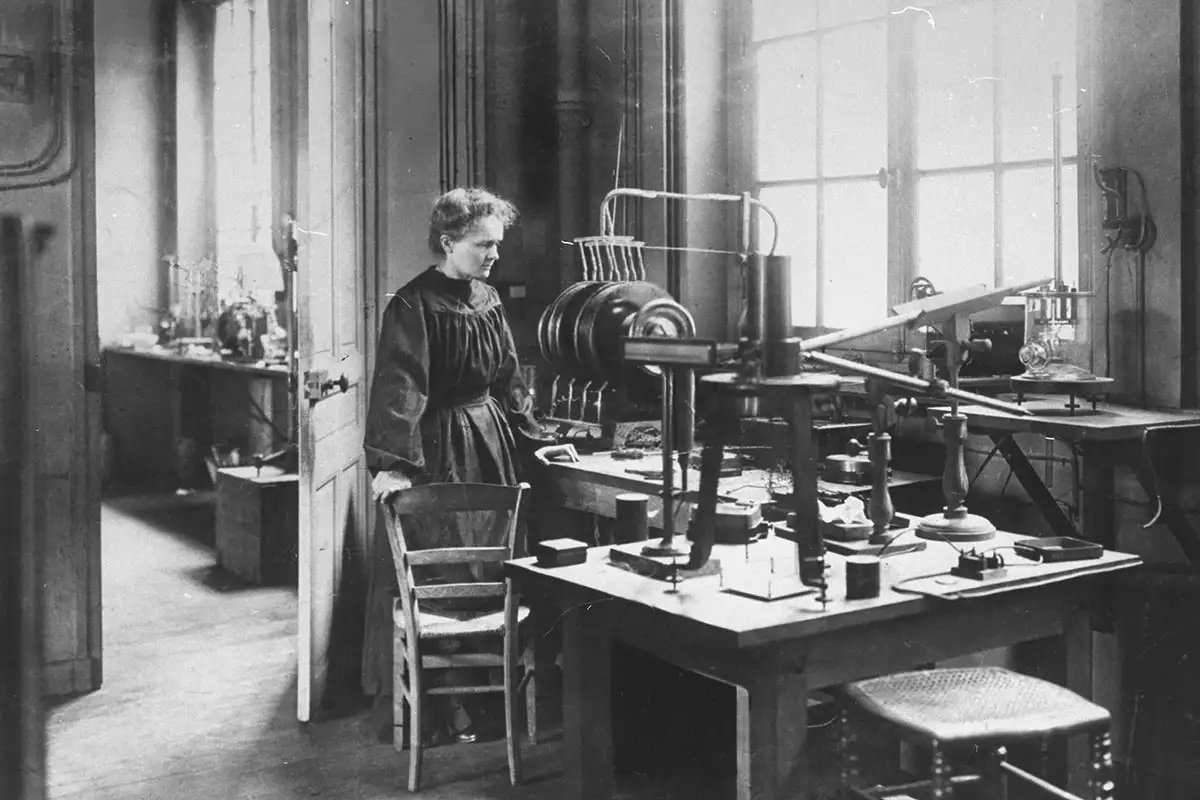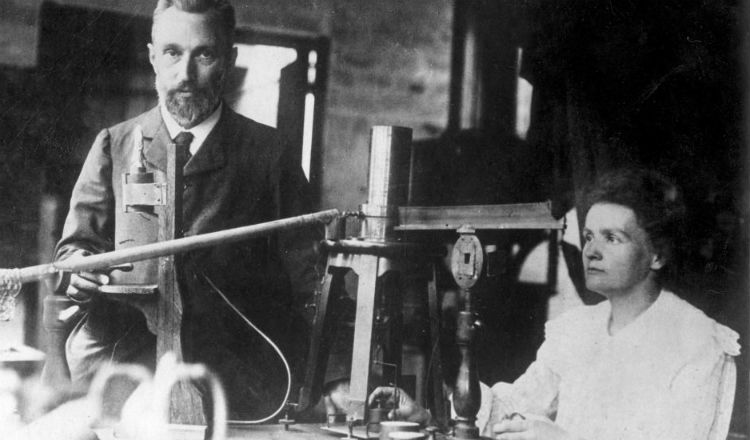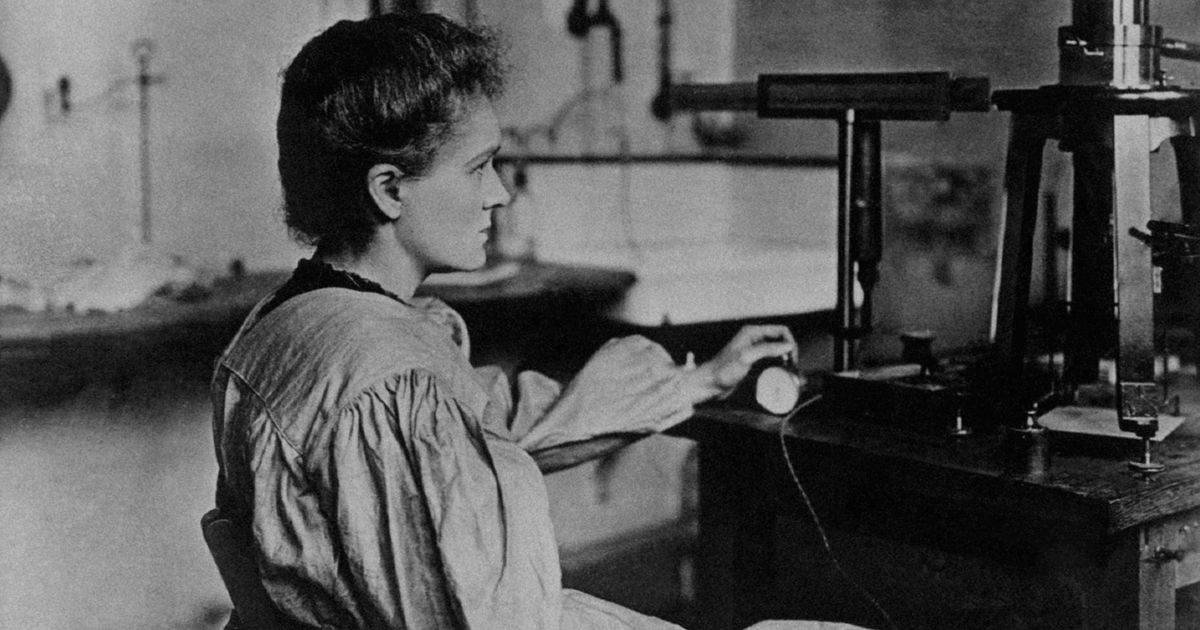Marie Curie is a Polish-born French physicist, famous for her groundbreaking research on radioactivity. She was the first woman to win a Nobel Prize, and the only person to win the award in two different scientific fields.
Marie’s contributions to science had a profound impact on the understanding of atomic and subatomic processes. Her work laid the foundation for advancements in the fields of physics and chemistry.
Despite facing significant challenges as a woman in the male-dominated scientific community of her time, Here is how Marie Curie’s pioneering achievements have made her an inspirational figure in the history of science.
Biography
Marie Curie was born in Warsaw, in what was then the Kingdom of Poland, part of the Russian Empire on 7 November 1867. Her family had lost their property and fortunes through patriotic involvements in Polish national uprisings aimed at restoring Poland’s independence, condemning them to a life of struggle.
When Marie was ten years old, She began attending the boarding school of J. Sikorska and then a gymnasium for girls, from which she graduated on 12 June 1883 with a gold medal. She was however unable to enroll in a regular institution of higher education because she was a woman. She and her sister however became involved with the clandestine Flying University a Polish patriotic institution of higher learning that admitted women students.
While her sister went for her medical studies in Paris, Marie worked first as a home tutor, then for two years as a governess with a landed family. She also tutored, studied at the Flying University, and began her practical scientific training in a chemistry laboratory until she was able to raise enough funds for her tuition fee before eventually joining her sister in Paris.
On getting to Paris, Marie enrolled at the University of Paris, studying physics, chemistry, and mathematics. She was able to sustain herself by studying during the day and tutoring in the evening. She was awarded a degree in physics in 1893, and with the aid of a fellowship, she was able to earn a second degree in 1894.
Career
Marie Curie began her scientific career in Paris with an investigation of the magnetic properties of various steels, commissioned by the Society for the Encouragement of National Industry. That same year, She met Pierre Curie, and their mutual interest in natural sciences drew them together, ultimately leading to marriage.
Marie returned to Poland believing that she would be able to work in her chosen field in Poland, but she was denied a place at Kraków University because of sexism in academia. A letter from Pierre convinced her to return to Paris to pursue a PhD. Upon her return to France, the couple set up a joint laboratory in a basement, building their equipment for their experiments.
Following the discovery of X-rays by Wilhelm Röntgen and Uranium by Henri Becquerel, Curie decided to look into uranium rays as a possible field of research for a thesis. She did this by investigating the unusual properties of pitchblende, a black mineral that is rich in uranium. Pierre Curie was intrigued by Marie’s work and decided to drop his work on crystals and join her.
By 1898, Marie and her husband published a joint paper announcing the existence of an element they named “polonium”, in honor of her native Poland. They also found the existence of a second element, which they named “radium”, from the Latin word for “ray”. In the course of their research, they also coined the word “radioactivity”
Between 1898 and 1902, the Curies published, jointly or separately, a total of 32 scientific papers, including one that announced that when exposed to radium, diseased, tumor-forming cells were destroyed faster than healthy cells.
In 1900, Marie became the first woman faculty member at the École Normale Supérieure and her husband joined the faculty of the University of Paris. Supervised by Gabriel Lippmann, Marie was awarded her doctorate from the University of Paris in June 1903, becoming the first woman in France to attain a PhD in Physics.
Nobel Prizes
In December 1903 the Royal Swedish Academy of Sciences awarded Pierre Curie, Marie Curie, and Henri Becquerel the Nobel Prize in Physics, “in recognition of the extraordinary services they have rendered by their joint research on the radiation phenomena”
At first, the committee had intended to honor only Pierre Curie and Henri Becquerel, but the Swedish mathematician Magnus Gösta Mittag-Leffler, an advocate for women scientists, alerted Pierre to the situation, who protested against it. Marie’s name was added to the nomination, making her the first woman to be awarded a Nobel Prize.
Following the award of the Nobel Prize, the University of Paris gave Pierre, a professorship and madehim the chair of physics. He was however killed in a road accident in 1906, forcing the University to offer Marie the chair that had been created for her late husband. She accepted it, making her the first woman to become a professor at the University of Paris.
In 1910 Curie succeeded in isolating radium; she also defined an international standard for radioactive emissions that was eventually named for her and Pierre: the curie. In recognition of this feat, the Royal Swedish Academy of Sciences, honoured her again, with the 1911 Nobel Prize in Chemistry. The award was “in recognition of her services to the advancement of chemistry by the discovery of the elements radium and polonium, by the isolation of radium and the study of the nature and compounds of this remarkable element.”
The Then Chair of the Nobel committee, Svante Arrhenius, attempted to prevent Marie’s attendance at the official ceremony for her Nobel Prize in Chemistry, based on her scandalous affair with Paul Langevin. Curie replied that she would be present at the ceremony, because “the prize has been given to her for her discovery of polonium and radium” and that “there is no relation between her scientific work and the facts of her private life”.
After receiving the second honor, Marie Curie became the first person to win or share two Nobel Prizes and remains alone with Linus Pauling as Nobel laureates in two fields each.
Later Life and Death
Aside from her Nobel Prizes and her groundbreaking Scientific discovery, Marie Curie is also often remembered for her contribution to saving wounded soldiers’ lives during World War 1. According to reports, she procured X-ray equipment, vehicles, and auxiliary generators, and she developed mobile radiography units, which came to be popularly known as Petites Curies (“Little Curies”).
Marie was the director of the Red Cross Radiology Service and set up France’s first military radiology center, operational by late 1914. Assisted at first by a military doctor and her 17-year-old daughter Irène, Curie directed the installation of 20 mobile radiological vehicles and another 200 radiological units at field hospitals in the first year of the war.
She also produced hollow needles containing “radium emanation”, a colorless, radioactive gas given off by radium, later identified as radon, to be used for sterilizing infected tissue. She provided the radium from her one-gram supply. It is estimated that over a million wounded soldiers were treated with her X-ray units. However, Despite all her humanitarian contributions to the French war effort, Curie never received any formal recognition of it from the French government.
In 1922 Marie became a fellow of the French Academy of Medicine. She also traveled to other countries, appearing publicly and giving lectures in Belgium, Brazil, Spain, Czechoslovakia, and even the United States. She became a member of the International Committee on Intellectual Cooperation, contributing to the League of Nations’ scientific coordination with other prominent researchers such as Albert Einstein, Hendrik Lorentz, and Henri Bergson
On 4 July 1934, she died in Poland at the age of 66, from aplastic anemia believed to have been contracted from her long-term exposure to radiation, causing damage to her bone marrow.





